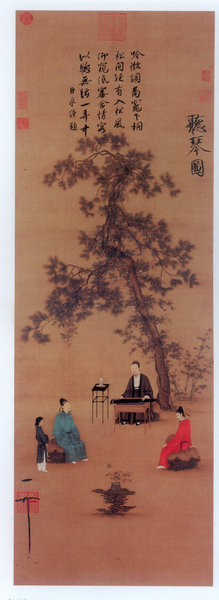 |
|
A work by Emperor Huizong from the Song Dynasty, who falls perfectly into the image of a literati painter.[Photo provided to China Daily]
|
Clear answer
So in China who was qualified as a literati painter and who was not? Despite the efforts by art critics and historians, especially in modern times, to answer that question, there is no clear answer.
"In ancient China a learned man was expected to take government office," says Zhang. "That explains why literati painting was at times called, rather strangely to modern ears, 'paintings by the officer class'. In fact many learned men did not end up being office holders. Some might have failed the royal examinations, and some refused to serve a new regime."
Apart from that, during the Qing Dynasty, with education becoming accessible to an increasing number of people, there were less government posts than qualified candidates. So to regard someone as a literati painter by dint of a government post he held is absurd.
Further complicating the picture is that there was never a set style for literati painting. Some well-known painter-poets had personal tastes that inclined more towards a subtle, delicate court style, practiced by professional painters on the emperor's payroll. And on rare occasions, professional painters with little education, Qiu Ying, for example, produced works that amounted to visual poetry. Both have traditionally been considered literati painters.
Yin Jinan, an art historian and professor at the Central Academy of Art in Beijing, has suggested a new way for making such delineations.


























 Raymond Zhou:
Raymond Zhou: Pauline D Loh:
Pauline D Loh: Hot Pot
Hot Pot Eco China
Eco China China Dream
China Dream China Face
China Face






